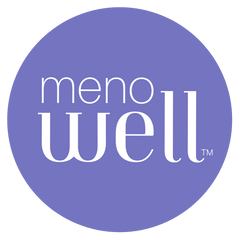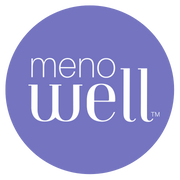How to Get Fit & Stay Fit After 50

When it comes to fitness in your 50s and beyond, one thing is clear—what worked in your 20s might not work now. And that’s okay. Your body changes, your energy shifts, and your goals evolve. But staying active is still one of the best ways to feel strong, balanced, and well through all stages of midlife.
The key? Sustainability.
A fitness routine doesn’t have to be intense or time-consuming. What matters most is consistency and choosing the kinds of movement that feel good to your body—not punishing. Let's explore how to build a sustainable fitness routine you’ll actually want to stick with.
Start Where You Are
You don’t need to be in perfect shape to begin. In fact, you don’t even need to “begin” again if you’ve taken a break. Every walk, every stretch, every deep breath counts. Your 50s are the perfect time to redefine what fitness means for you. Instead of focusing on shrinking your body, think about building strength, boosting energy, improving balance, and supporting your mental well-being.
Why Fitness Matters More in Midlife
Regular movement helps with:
-
Muscle maintenance
-
Joint mobility
-
Sleep quality
-
Mood and mental clarity
-
Blood sugar regulation
-
Weight management (especially around the belly)
Hormonal changes during perimenopause and menopause can affect how your body holds onto weight, how quickly you recover from workouts, and even how motivated you feel to exercise. But movement—especially the kind that builds muscle and feels energizing—can help you navigate all of it with more ease.
Build Your Routine Around These Pillars
🟣 Strength Training
After age 40, we naturally lose muscle mass every year. The best way to slow this process is by building and maintaining strength. This doesn’t have to mean lifting heavy weights at the gym—although it absolutely can!. It can also look like using resistance bands, doing bodyweight movements like squats and wall push-ups, or practicing Pilates. Start where you are, track your progress, and challenge yourself to get stronger every week.
🟣 Cardio That Feels Good
Think beyond the treadmill. Brisk walking, hiking, biking, or dancing in your kitchen all count. Aim for 150 minutes a week, but remember: even 10 minutes at a time adds up.
🟣 Flexibility & Balance
Yoga, gentle stretching, and balance work (like standing on one leg while brushing your teeth) can help you stay agile and reduce your risk of falls as you age.
🟣 Recovery Time
You may notice it takes longer to bounce back from a workout than it did in your 30s. That’s normal. Don’t skip rest days. Listen to your body and honor when it needs a slower pace.
Make It a Habit You Enjoy
One of the biggest barriers to fitness in midlife is motivation—and much of that comes from choosing movement that doesn’t feel like a chore. Your workout shouldn’t feel like punishment. In fact, it should be something you look forward to.
Here are some tips:
-
Pair your workout with music or a podcast
-
Meet a friend for a walk instead of coffee
-
Keep your gear visible as a reminder
-
Track your progress with checkmarks or gold stars (yes, seriously!)
-
Celebrate consistency, not perfection
Nutrition: The Other Half of the Wellness Equation
Working out is just one piece of the puzzle. Your body also needs fuel that supports energy, muscles, and hormone balance.
In midlife, it’s especially helpful to prioritize:
-
Protein to maintain muscle
-
Fiber to support digestion and blood sugar
-
Healthy fats like omega-3s and MCTs for brain and metabolic support
-
Complex carbs for steady energy
Snacks can be tricky, especially when you’re running between meetings, errands, or your next Pilates class. That’s why smart, satisfying choices matter.

 CHECK FOR DISCOUNTS AND SHOP ON AMAZON
CHECK FOR DISCOUNTS AND SHOP ON AMAZON
A Delicious Way to Support Your Fitness Goals
MenoWell Fiber + Protein Bars are designed with women in midlife in mind. They’re plant-based, gluten-free, and made with ingredients like:
-
Organic maca
-
Probiotic fiber
-
Plant-based protein
-
MCT oil from coconuts
-
Leafy greens like spinach and kale
-
Dates for natural sweetness
At just 150–160 calories, they’re a perfect pre- or post-workout bite, a bridge between meals, or a quick first meal during intermittent fasting. Because fitness starts with how you fuel.
These bars help take the guesswork out of good nutrition, so you can stay focused on building habits that support you—in the gym and everywhere else.
Keep Moving, Keep Growing
There’s no one-size-fits-all when it comes to fitness after 50. But there is a perfect fit for you. Think of movement as a way to care for your body, not change it. When you find routines that feel good, you’ll be more likely to keep going.
And remember: strength isn’t just measured in reps or miles. It’s measured in showing up for yourself, day after day.
Whether you’re picking up weights, taking a slow walk after dinner, or fueling with food that supports your goals—every step counts.

 CHECK FOR DISCOUNTS AND SHOP ON AMAZON
CHECK FOR DISCOUNTS AND SHOP ON AMAZON
-
Harvard Health Publishing
-
Mayo Clinic
-
National Institute on Aging
- North American Menopause Society
- Cleveland Clinic



